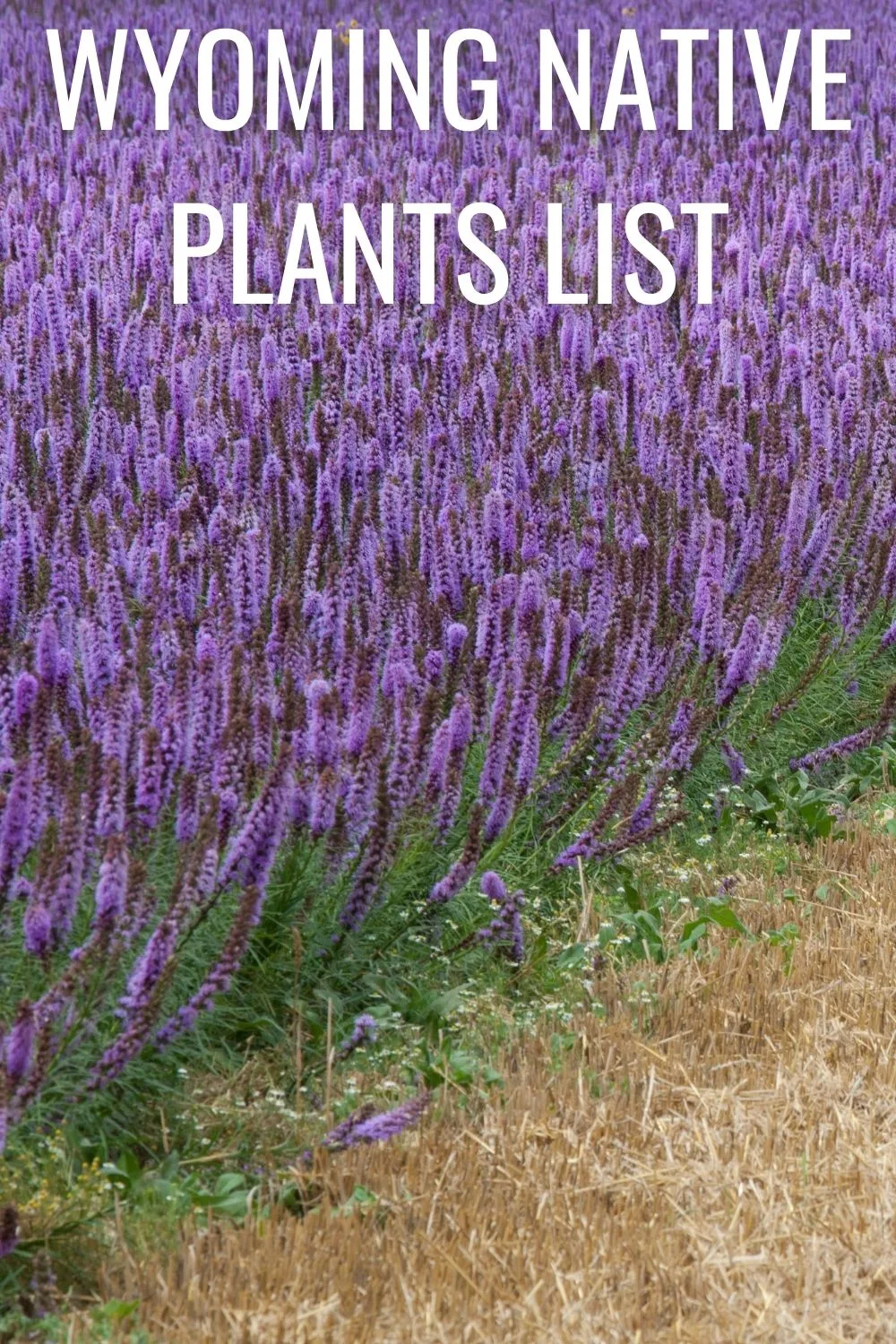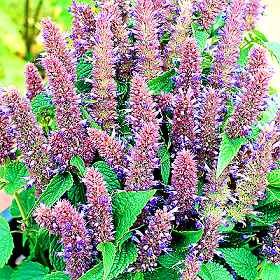We have compiled this Wyoming native plants list to help you choose the best wildflowers for your native garden or landscape. The Indian paintbrush is the state flower and it’s illegal to pick it if you see it by roadsides or anywhere else in the state. It’s just one of many native wildflowers you can plant in your own garden or landscape.

Did you know that native plants are good for the local ecosystem? And they’re also much easier to care for and will require less maintenance and fewer resources to keep alive and healthy. Let’s look at some of these wildflowers that are native to the state.
Wyoming Native Plants List
Now let’s take a look at some great choices for native wildflowers in Wyoming.
1. Columbian monkshood (Aconitum columbianum)
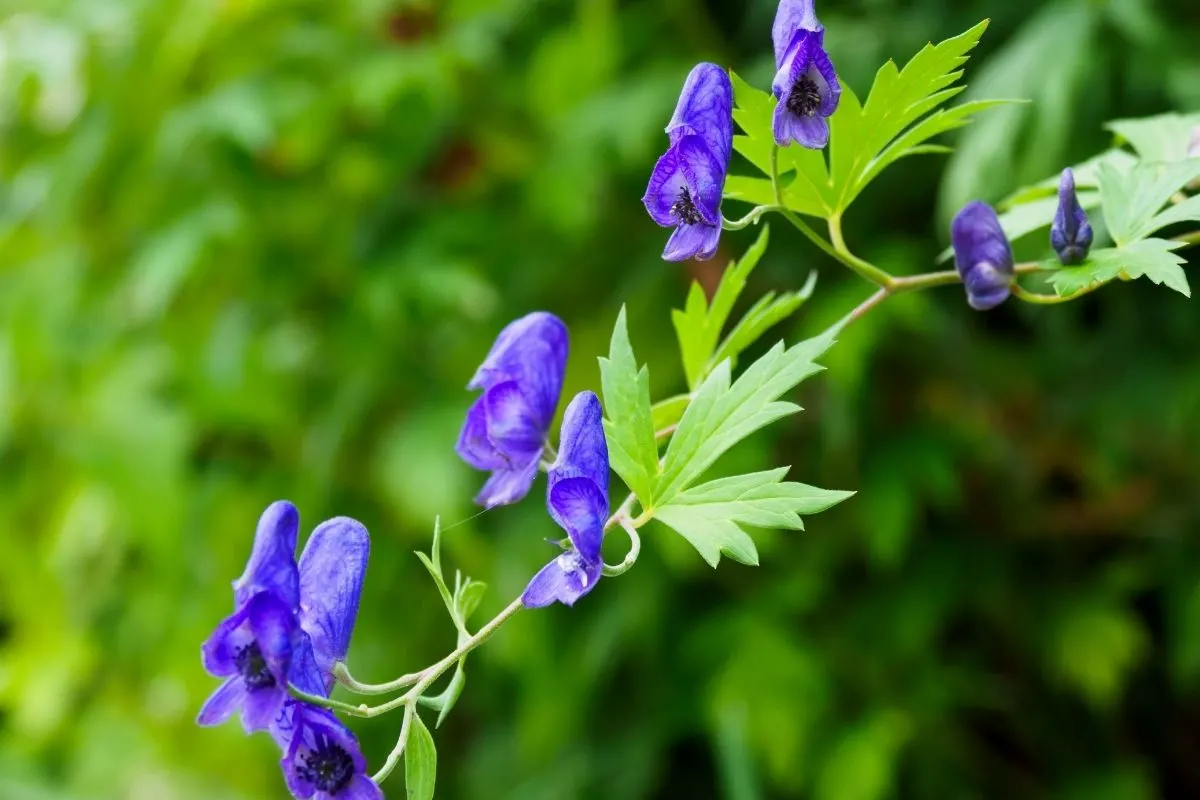
Columbian monkshood is a tall, leafy plant in the buttercup family. It has bilaterally symmetrical, hood-like flowers in blue or violet color that grow on a showy raceme.
They bloom in July and August and natively are found near moist woods, wet thickets, or stream banks. Not surprisingly, they like moist, rich soil and shady conditions. The flowers will attract bumblebees, hummingbirds, and hawkmoths.
2. Baneberry (Actaea rubra)
Baneberry or red baneberry, as it is sometimes called, is part of the buttercup family and is a bushy plant that grows 1–3-foot stems with attractive but poisonous red berries that fruit on it.
When in bloom, it has dense clusters of white flowers at the tops of the stems, above the foliage. They bloom from April to June and like moist, acidic, well-drained soil and full sun to part shade.
3. Horsemint giant hyssop (Agastache urticifolia)
Horsemint giant hyssop grows tall, stout stems straight up to about three feet, although they can occasionally be taller. It is part of the mint family and is sometimes called nettle leaf giant hyssop.
It blooms from June to August and is usually shades of red. It likes part shade and medium water usage. This is a great plant for native bees and bumblebees, as well as honeybees.
4. Orange agoseris (Agoseris aurantiaca)
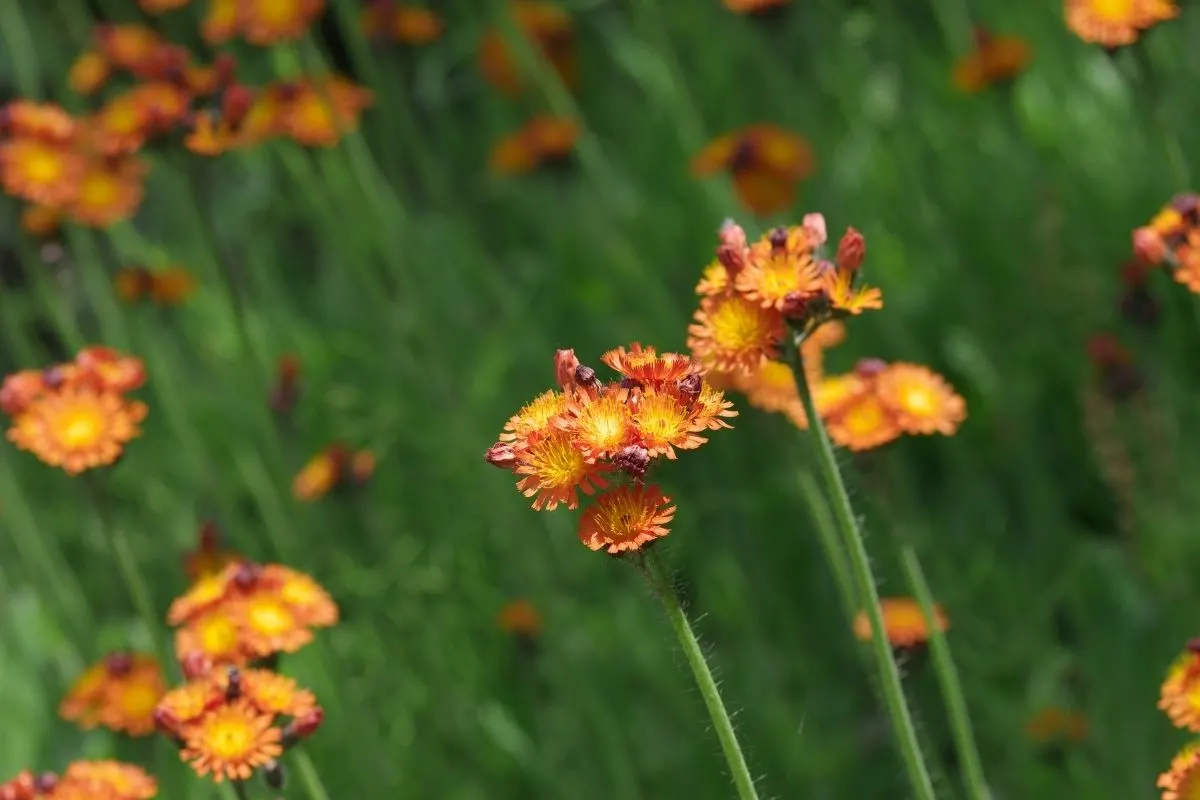
Orange agoseris is a member of the aster family. It has leafless stalks with milk sap that grow 1-3 feet tall, on average.
It has orange flowers at the tops of the stems and it’s the only Agoseris with orange blooms. They can also sometimes be pink or orange, and very rarely, white. They bloom from June to August and like moist soil and full sun.
5. Pale agoseris (Agoseris glauca)
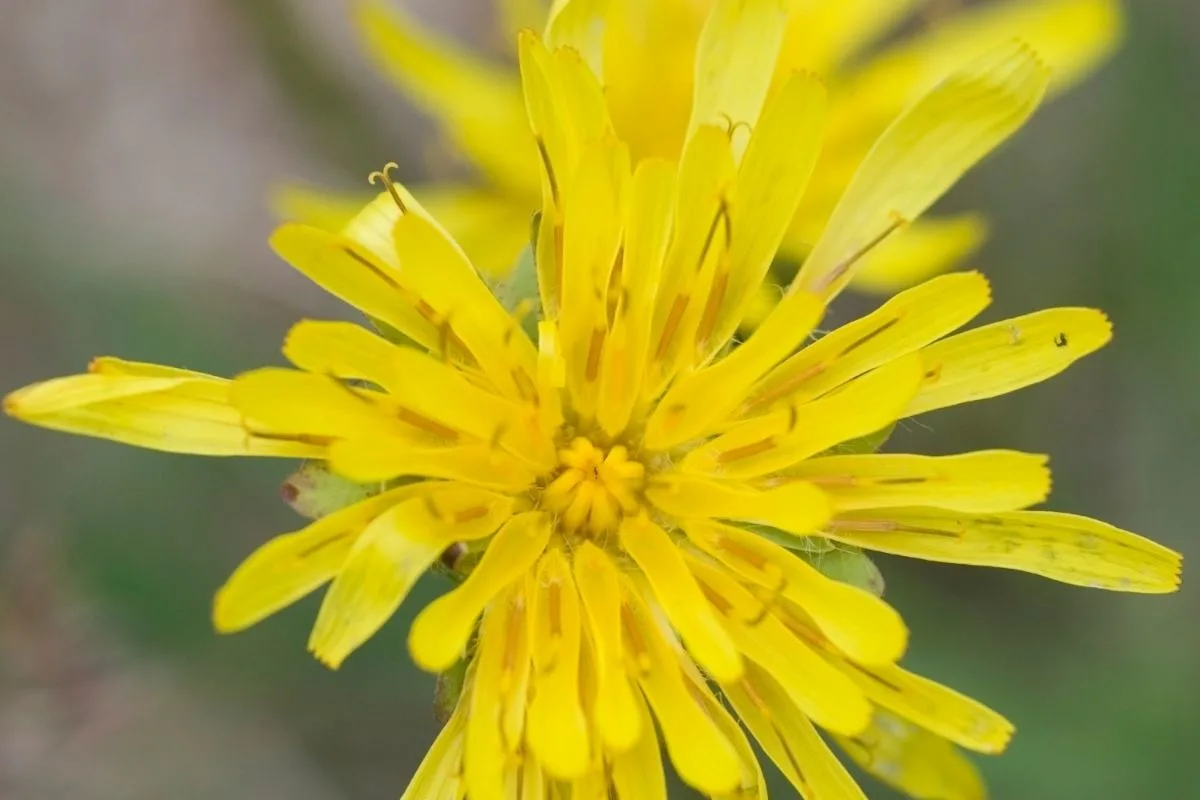
This wildflower is also known as pale mountain dandelion and false dandelion. It looks like a dandelion but it’s from the aster family as well. It has several leafless stalks and a yellow flower head that blooms right at the top of the stalks.
It can bloom from May through to September and likes full sun and medium water. It’s a fairly hardy plant that can adjust to different soil conditions and climates.
6. Sticky gilia (Aliciella pinnatifida)
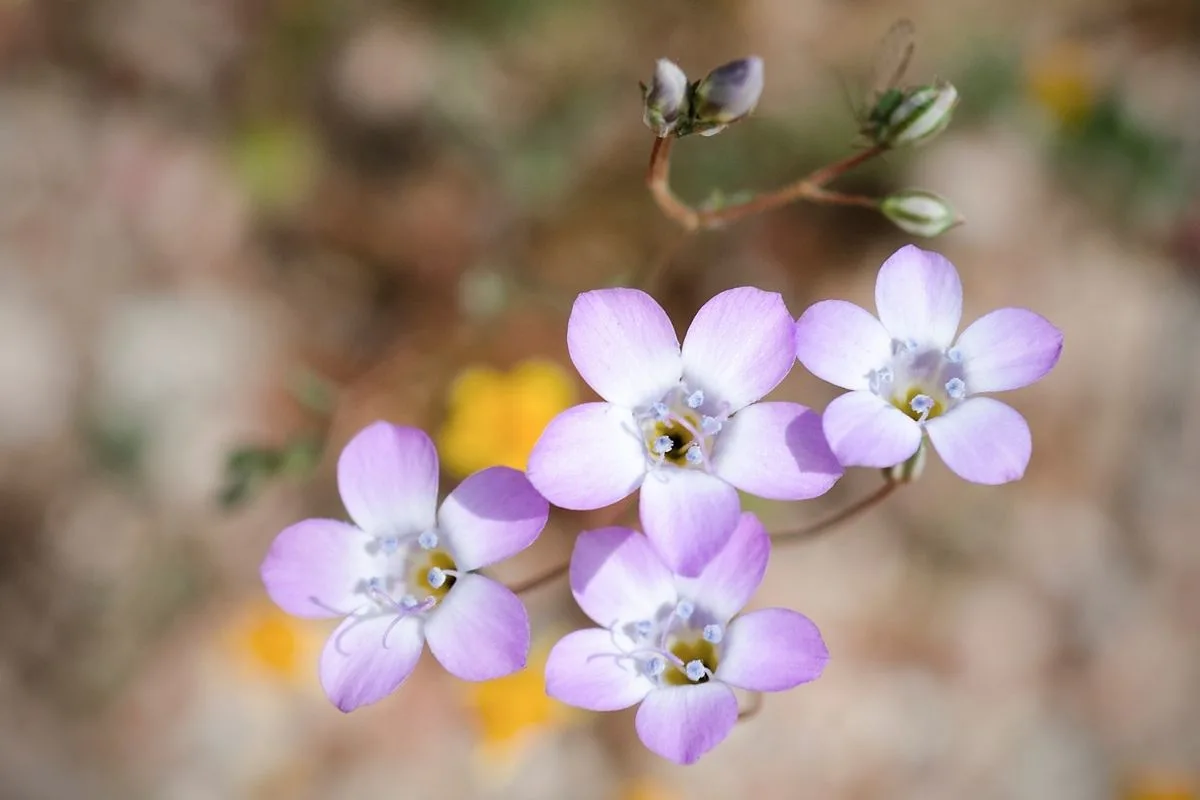
This unique native is part of the phlox family. Sticky gilia usually grows to about 12 inches tall, although it can sometimes be as much as 24 inches. It blooms blue flowers from May to September. Sometimes the very light blue petals can appear white.
7. Northern water-plantain (Alisma triviale)
Members of the Water-Plantain Family grow in water, in swamps, on muddy banks, or occasionally in wet sand. The northern water plantain is native to Wyoming, Minnesota, and other native states.
The white flowers can bloom all year round and this aquatic plant likes very wet soil. It’s beneficial to the local ecosystem and can do very well in water gardens or in landscapes with water fixtures.
8. Nodding onion (Allium cernuum)
Several blooming wild onions are native to this state. Nodding onion is part of the lily family and has soft, leaves similar to grass and grows 1–2-foot stalks that rise up and form a bulb on the end when the flowers come in.
The blooms are usually white or pink and come from June to August. It likes humus-rich, moist, alkaline soil and full sun. It will attract butterflies and hummingbirds to your garden.
9. Alkali marsh aster (Almutaster pauciflorus)
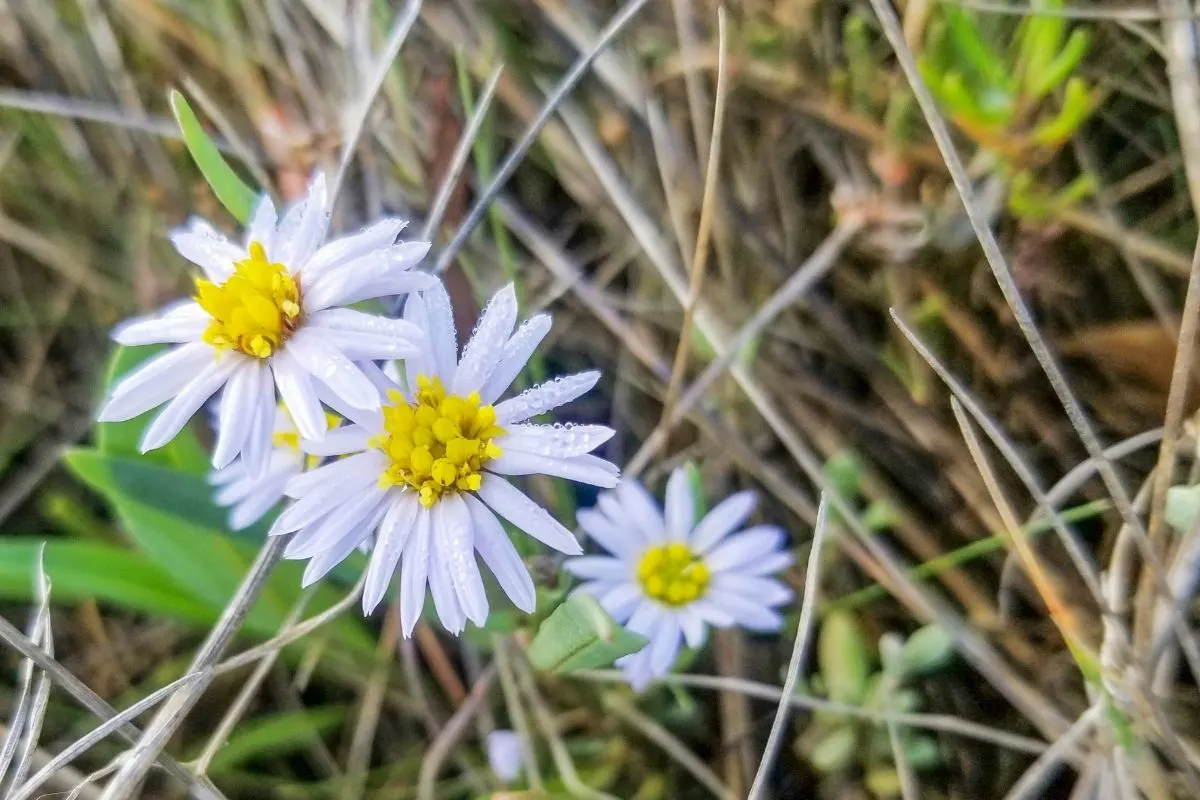
Alkali marsh aster is part of the aster family and can grow up to four feet tall. It has white or pink flowers that can bloom from April to October.
It likes wet, alkaline soil and the flowerheads have 15 to 30 white to pale pink ray flowers centered around a yellow disc floret in the center. It is an attractive, unique-looking flower that various insects will enjoy.
10. Utah serviceberry (Amelanchier utahensis)
Utah serviceberry is part of the rose family. It is a branching deciduous shrub or sometimes a small tree that has grayish, oval leaves. It can grow from 3-15 feet.
It has dark purple fruit and white flowers that can sometimes be shades of pink. The flowers bloom from April to June. This plant likes dry, well-drained soil and part shade. The showy, ornamental blooms will attract nectar-seeking insects.
11. Rock jasmine (Androsace septentrionalis)
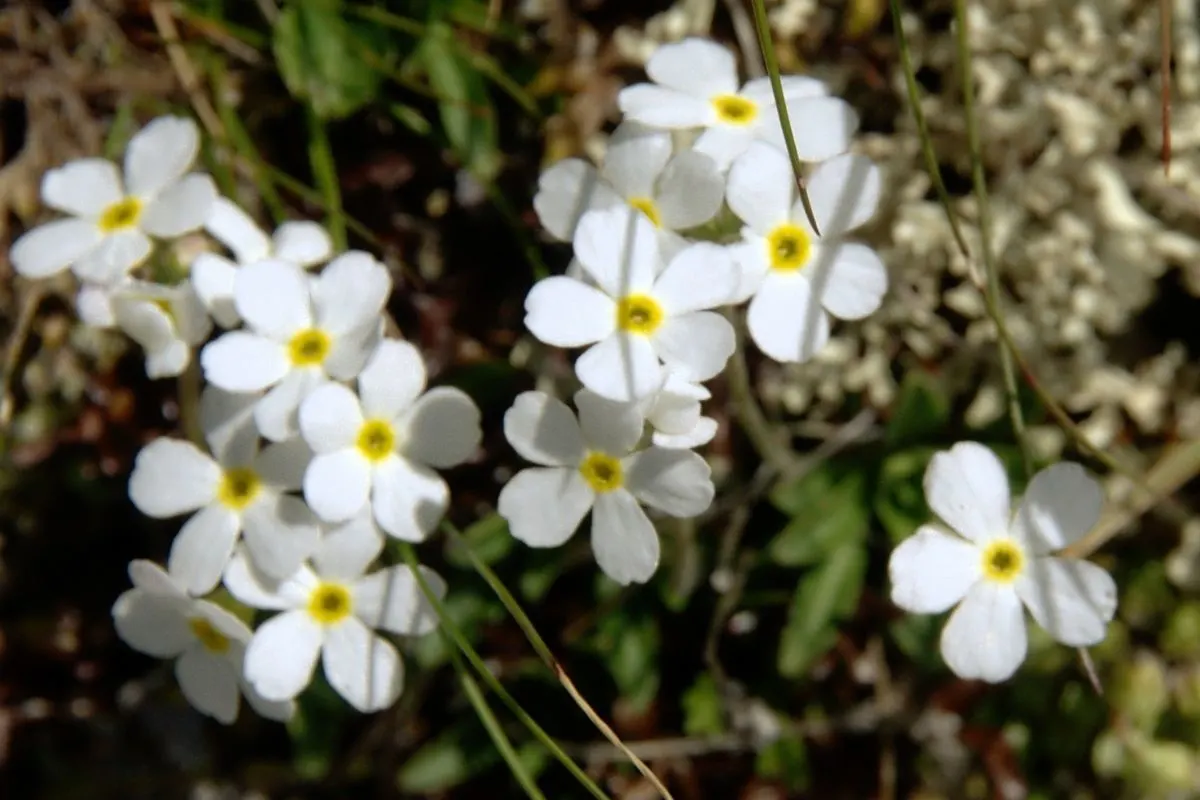
Rock jasmine is known by many names such as pygmyflower rock jasmine, and various spellings of the two names. It grows about 6 inches tall and the white flowers bloom from March to September.
In nature, it grows in open areas with sand or gravelly soil.
12. Red windflower (Anemone multifida)
Red windflower is known by many names, including cut-leaf anemone, early thimbleweed, and pacific anemone. The silky stems grow from 6-20 inches tall, and the flowers grow at the tops of those stems.
The blooms are usually yellowish-white within and green, yellow, or purple on the outside. It is variable so you could get different colors in yours. They like moist soil and full sun to part shade.
13. Narcissus-flowered anemone (Anemone narcissiflora)
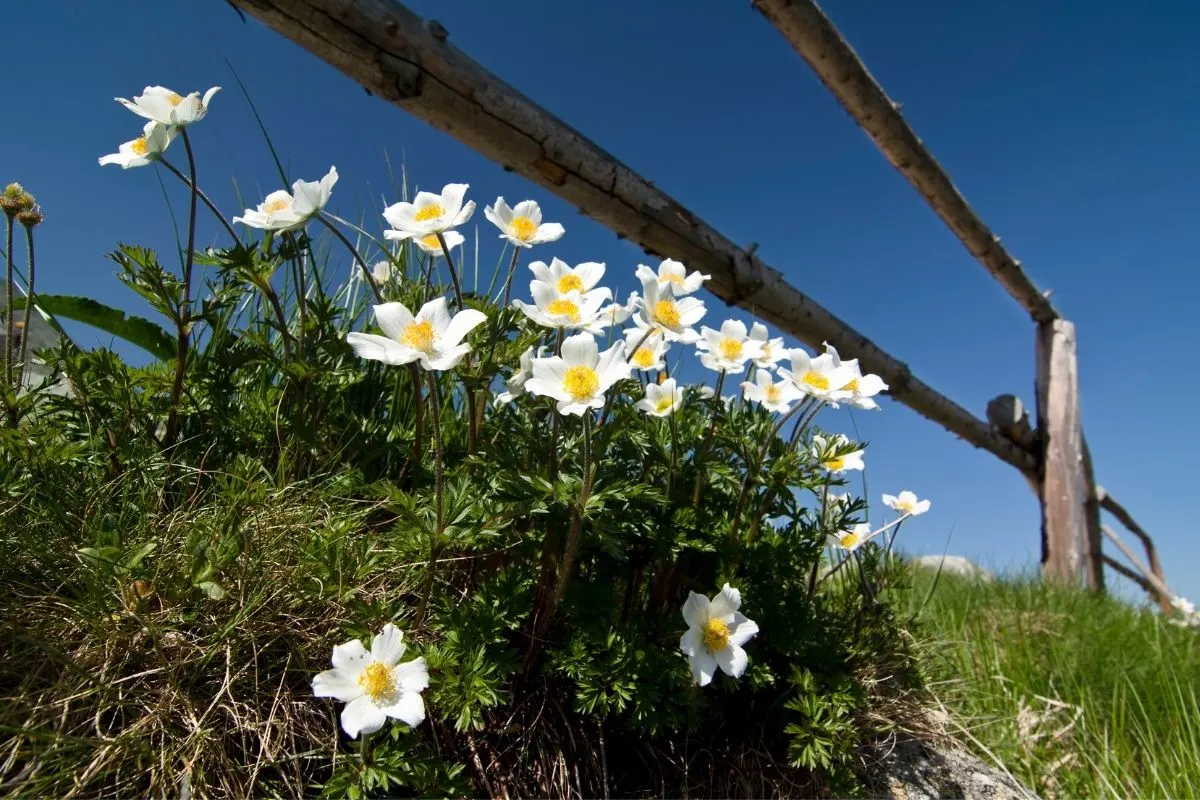
Narcissus-flowered anemone is part of the buttercup family. It is sometimes called just narcissus anemone. It typically grows only about 8 inches tall, although rarely, can be a bit taller. It’s smaller than other anemones.
The white flowers bloom in June. It likes rich, sandy, loamy soil and part shade.
14. Pearly pussytoes (Antennaria anaphaloides)
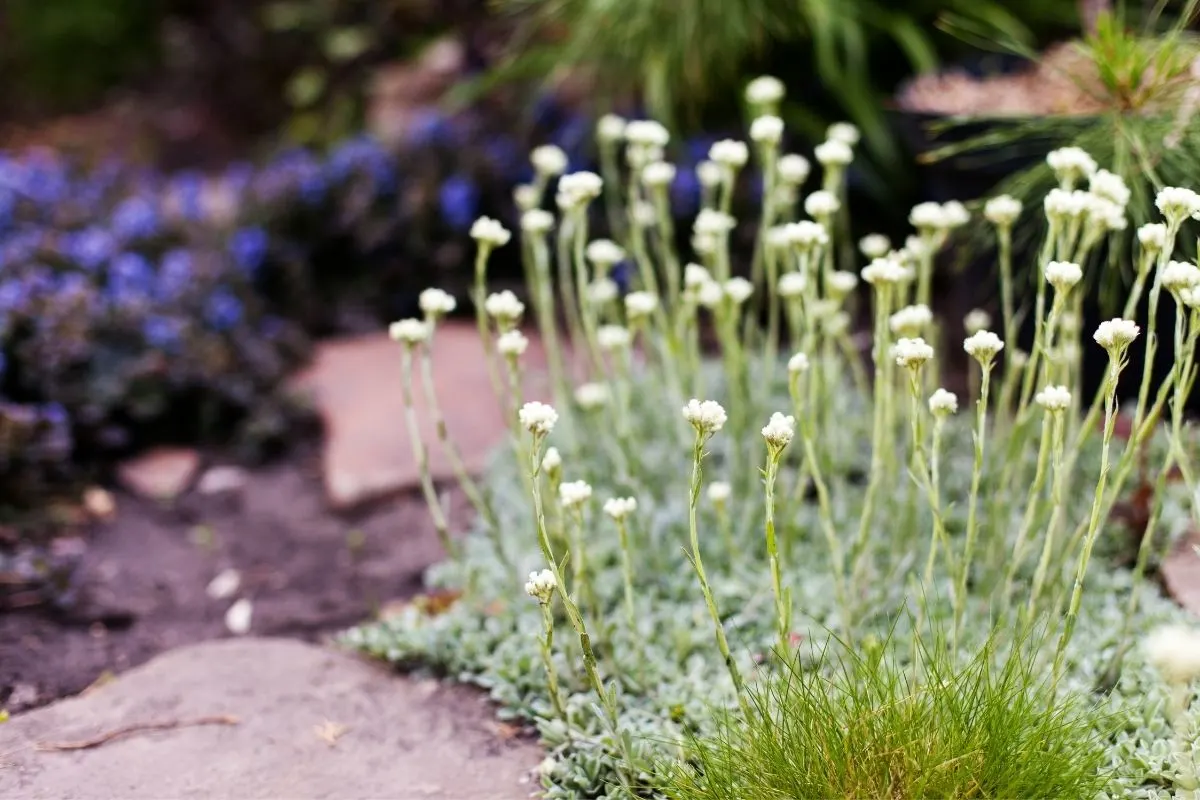
Pearly pussytoes is just one of several pussytoes varieties that are native to Wyoming. Others include low pussytoes, rocky mountain pussytoes, little leaf pussytoes, and rosy pussytoes. It is sometimes called tall pussytoes or handsome pussytoes.
The common name comes from the shape the flowers take, which resembles the feet/paws of a cat. The white and yellow flowers bloom from June to August. The plant can grow as much as 18 inches tall.
15. Stinking chamomile (Anthemis cotula)
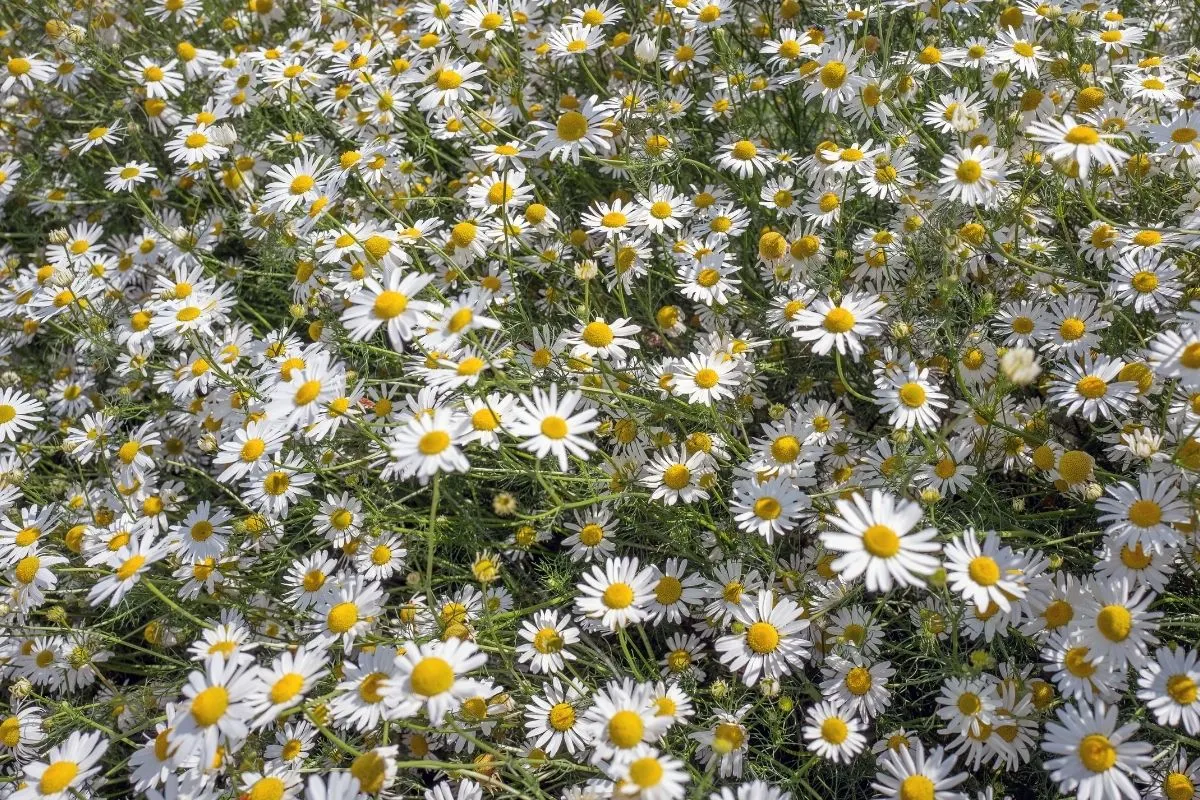
Stinking chamomile grows in open fields as a bit of a weed but can make a good ground cover or filler in your garden or landscape. It’s hardy and spreads quickly.
The white and yellow flowers look a bit like large daisies but the leaves on this plant are very different from daisies. When crushed, it has a bad odor, hence its common name. Low maintenance once established.
16. Elegant death camas (Anticlea elegans)
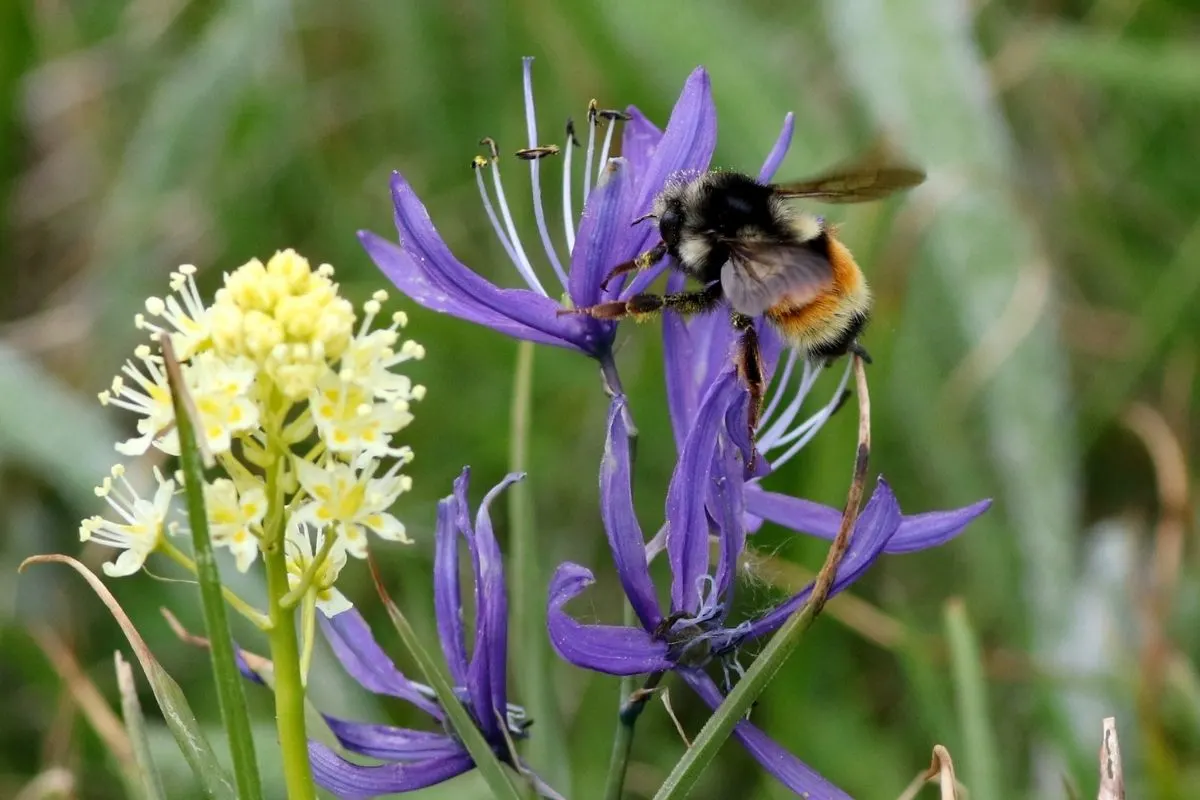
Elegant death camas is also called mountain death camas and is often found in mountainous areas of Wyoming. It grows loose clusters with 10-30 greenish-cream flowers on a 1–2-foot stem.
The flowers come in from June to July and alternate up the bloom stalk on the short stems. It likes moist, sandy soils and sun to part shade.
17. Bitter dogbane (Apocynum androsaemifolium)
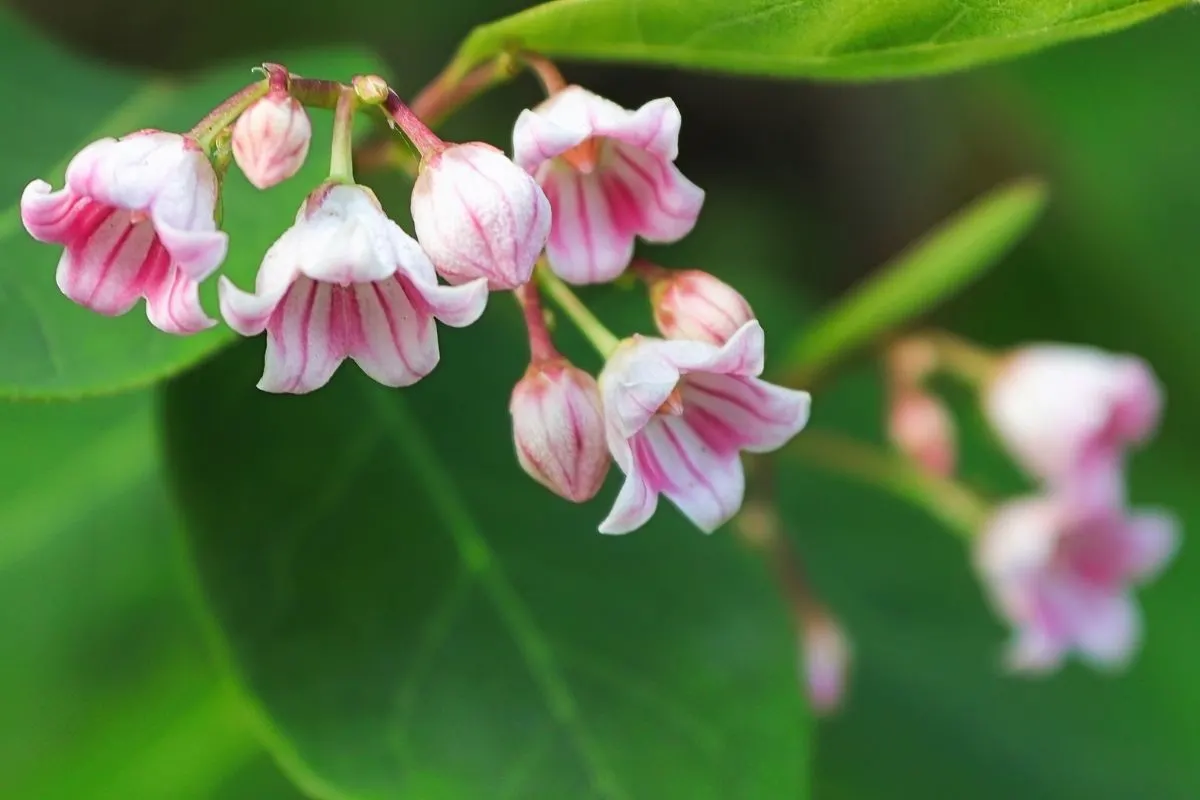
Bitter dogbane is also called bitterroot, spreading dogbane, or flytrap dogbane. It grows from 2-5 feet tall and is widely branching.
It grows bushy, with small groups of tiny, bell-shaped flowers near the tips of the branches. The flowers smell a bit like lilacs. This plant is related to milkweed.
The pink flowers bloom from June to August. It likes dry, sandy soil and full sun to part shade. It typically spreads very quickly in gardens.
18. Crested prickly poppy (Argemone polyanthemos)
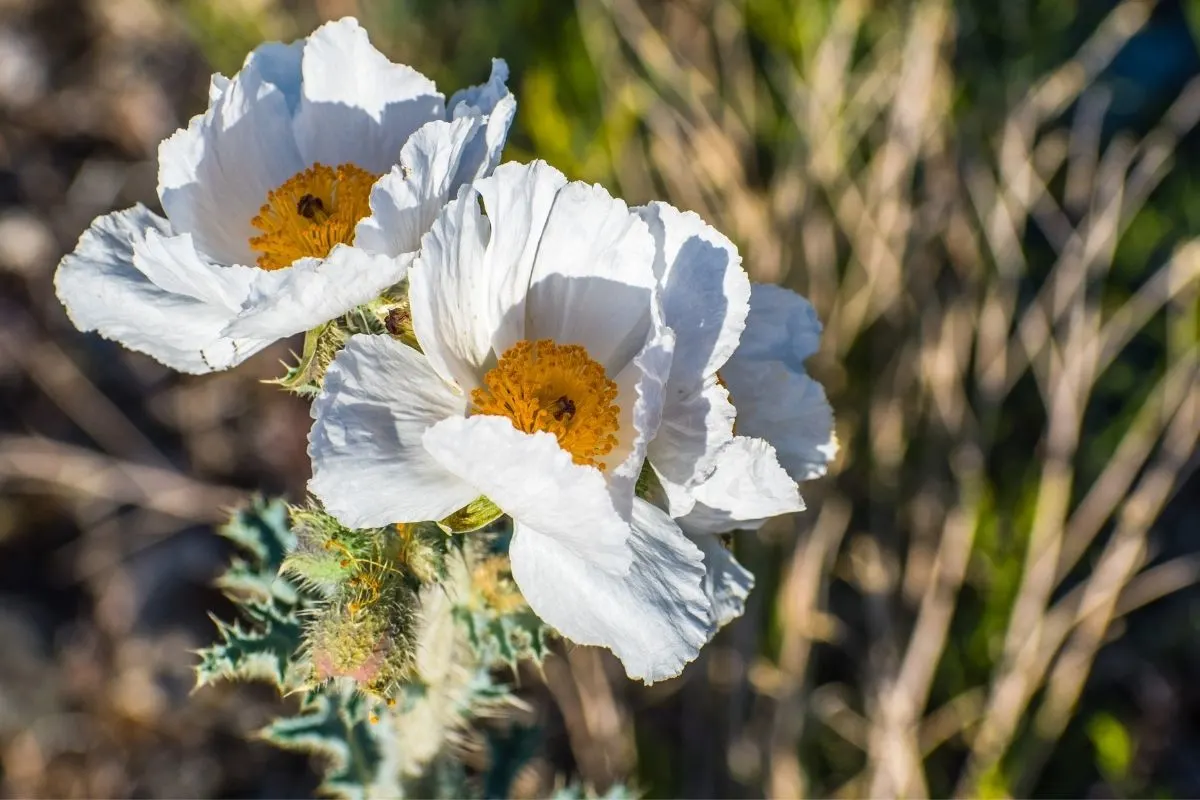
Crested prickly poppy is one of several names for this flower in the poppy family. You may also have heard it called annual pricklepoppy, bluestem pricklepoppy, thistle poppy, white pricklypoppy, or other variations of these names.
It’s a branched, pale blue-green leafy plant that has white flowers with yellow centers that bloom at the tops of the stems. The flowers can be as big as 5 inches across and bloom from April to October. It likes dry soil and a lot of direct sun to thrive.
19. Leafy arnica (Arnica chamissonis)
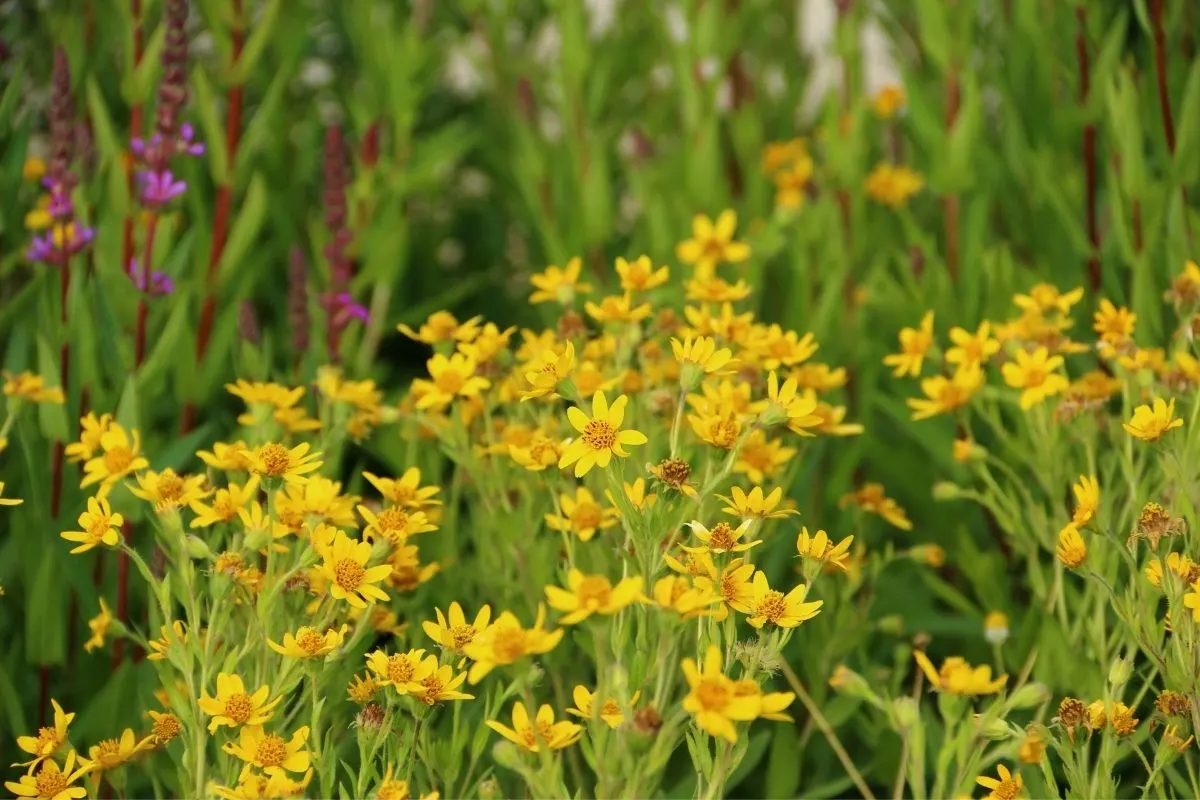
Leafy arnica is part of the aster family. It can grow up to about three feet tall and the yellow flowers bloom from April to September. Sometimes it is also called Leafy Leopardbane.
It’s easy to tell it’s in the sunflower family because the flowers look like little sunflowers. It prefers full sun but can tolerate different types and pH soils. It’s fairly low maintenance once established.
20. Showy milkweed (Asclepias speciosa)
One of the more attractive milkweeds, showy milkweed, grows from 1 ½ to 3 feet tall. It’s closely related to common milkweed.
It has spherical clusters of rose-colored flowers that bloom from May to September. They can sometimes be green or purple as well.
They like full sun and moist soil. They don’t do well in shade and will need open spaces to thrive. Hummingbirds and butterflies will be attracted to showy milkweed in your garden or landscape.
21. Yellow milkvetch (Astragalus flavus)
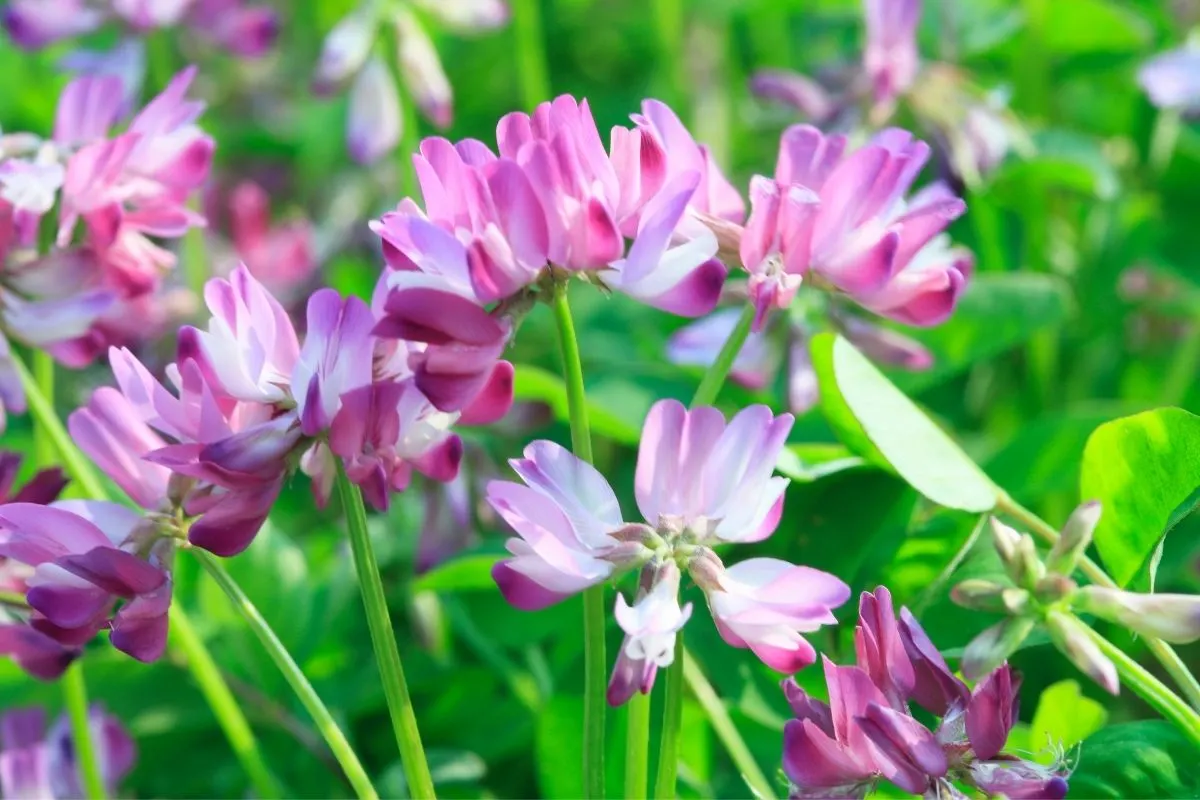
Yellow milkvetch is part of the pea family. This perennial has a low to the ground, bushy appearance. The flowers are usually white or can be pale to dark pink. They grow in elongated clusters, usually 6 to 30 each. The leaves on this plant are very distinct, long, narrow, and widely separated.
This is just an example of the many native plants found in Wyoming. There are so many beautiful plants and stunning wildflowers, it’s hard to decide which ones go on the list and which ones don’t. Feel free to do more of your own independent research to see the additional plants native to your area.
Wyoming native plants list FAQ
Here are some commonly asked questions about native plants in Wyoming to help you with your own garden or landscape.
Where can I buy native plants?
Local native plant nurseries are a good place to buy native plants. If you liked to learn more, the Wyoming Native Gardens is a publication by the University of Wyoming Biodiversity Institute that helps you learn more about buying native plants in the state.
How do I choose plants that can survive in Wyoming?
Wyoming does have a very harsh climate and native plants are always going to be your top choice because they have adapted to the climate and conditions of the state. That said, you want to do your research and be sure you’re choosing the best native plants for your particular region, as it is a big state.
What do I do if I have invasive plants in my yard?
If you have an invasive species in your yard or landscape, you can get it professionally removed before starting your new garden or landscape project.
